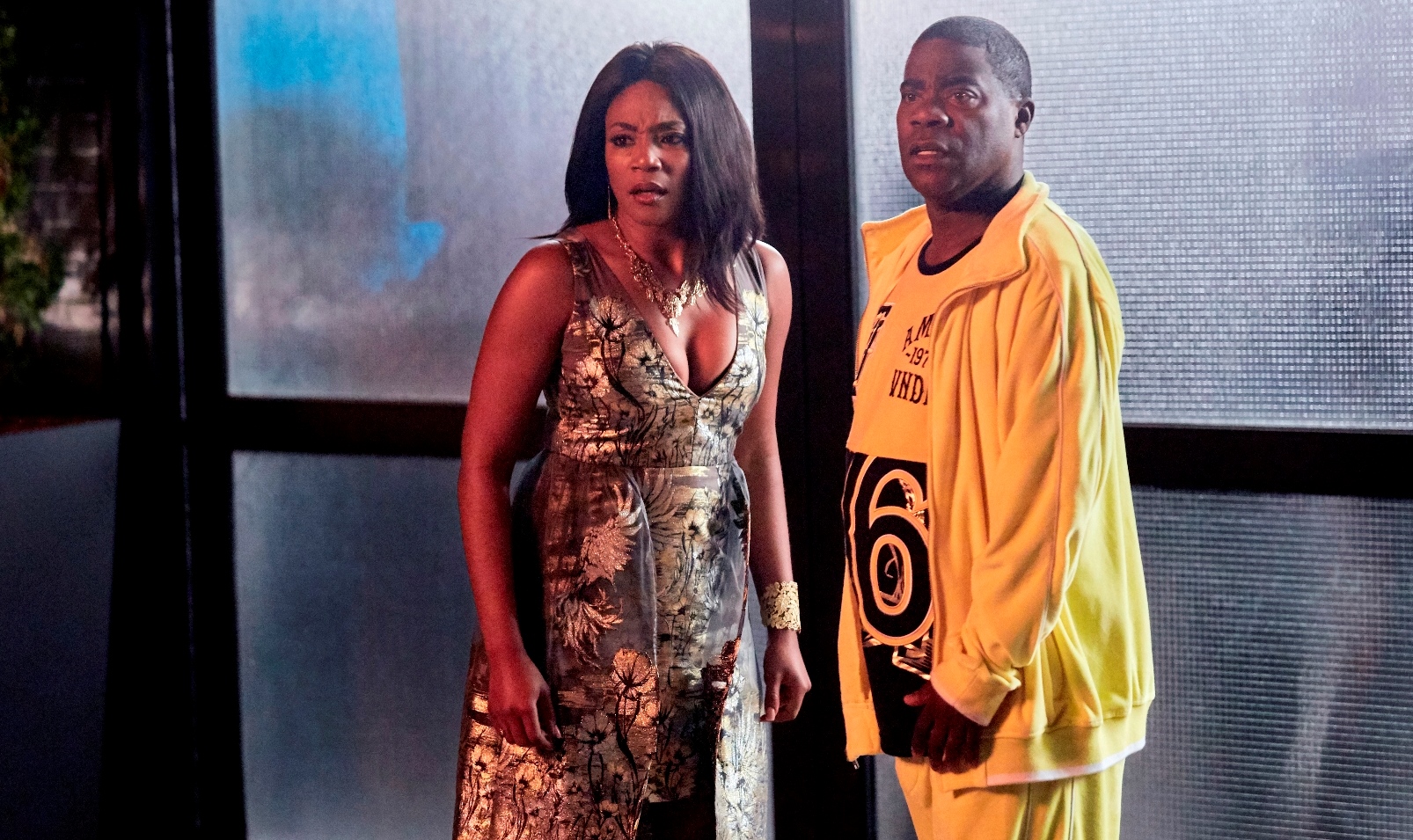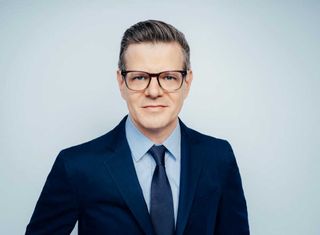TBS, TNT CMO Engleman Talks 'The Last O.G.' Community Outreach Initiatives

Michael Engleman is chief marketing officer for TBS and TNT, two of the biggest channels in pay television. As such, Engleman presided over a string of remarkable community outreach initiatives on behalf of the new TBS dramedy The Last O.G., which debuted in April to ratings records for the network.

In and around that launch and since, the show’s star, Tracy Morgan, and people connected with the show and network, collaborated on a series of community programs. They both highlighted key themes in the show, including the challenges a former felon faces reintegrating with society, while also helping the Brooklyn neighborhood where Morgan grew up and the show was largely filmed.
The initiatives included a comedy fundraiser emceed by Morgan and co-star Cedric the Entertainer that benefited the Fortune Society, which helps thousands of former prisoners transition into civilian life; refurbished basketball courts at Marcy and Gowanus playgrounds; commissioning thousands of branded brownies from Greyston, whose Open Hiring process makes it easier for ex-cons and those deemed unemployable to find work; and partnered with State Bags, which uses a “sell one, give one away” model similar to Tom’s, to provide backpacks with snacks, shirts and socks to the students in a Red Hook school.
I talked with Engleman about the project, what it meant for the show and community and why more TV shows should think about these opportunities to both “do good and do good business.” The interview has been edited for clarity.
DB: I don't recall ever hearing a TV show doing community outreach efforts like you did with The Last O.G. What was their genesis?
ME: A couple of things came together. Part of it is this shift in the marketer’s mindset and a change in our methodology, from selling TV shows to viewers to building relationships with consumers, building authentic relationships.
With that as the backdrop, we try to look at our shows and think about what is authentic and organic to the material? And how can we create a platform from the DNA of a show where we can celebrate it and expose that DNA to viewers, fans, potential viewers and provide ways that they can make a connection with the content.
Broadcasting & Cable Newsletter
The smarter way to stay on top of broadcasting and cable industry. Sign up below
In this instance, Tracy as a human being, and Tracy as the character, have a lot of natural connections that led to thinking about themes like second chances, human capital and the struggle of making a life for oneself, post-incarceration, the sort of social balances and imbalances that come from gentrification. Those themes are core pillars of The Last O.G. They are important themes to Tracy Morgan as a human being. And we just saw that as an opportunity to do something that would be really positive for the world, positive for the community that is the backdrop for the show, Brooklyn and New York City. And we knew by doing that, we could not only do good but we could also do some good business for the show.
DB: ‘Do good and and do some good business.’ How would you quantify what it meant beyond the sort of Corporate Social Responsibility efforts that bring a halo of goodwill to the show?
ME: The halo of goodwill is, to your point, hard to quantify. When we create these kinds of initiatives, sometimes the value is really just in the benefit to the constituency or community that we're intending to help.
We designed these particular initiatives in ways that we could do good, but we could also use each initiative as a platform to create experiences for influencers and tastemakers who, by virtue of talking about those events and initiatives, could create awareness for the show. We created experiences that involved various press outlets, whether it was The View or Viceland. Each of those press impressions has some sort of transactional value in driving awareness for the show. And we can quantify those. That is the good business piece of it.
But a little less quantifiable, a little less tangible, is the methodology shift from driving transactional viewership. By that I mean I put an ad out into the world, I pay a CPM for that ad. And I drive a certain amount of viewers.
Now we’re really thinking about building longterm relationships with viewers who hopefully become fans of our shows and fans of our brands. We’re creating content and creating experiences, developing initiatives, some of which have a pro-social angle, that help us participate in that relationship in a way that's organic and attractive, and builds enthusiasm for everything that lives under the umbrella of our business.
DB: The Turner networks have invested heavily in data to understand your audiences. By knowing your audiences and building long-term relationships with them, does that help in particular with younger viewers?
ME: There are a couple of things packed into that. One is, we’re in an age of media overload, certainly with the TV landscape and all the inordinate choices that we have. That’s only compounded when you think about the dozens of other entertainment experiences that live adjacent to TV. In that landscape of infinite choice, we have found our approach to be much more effective.
While we certainly do a lot of traditional advertising and promotion, and we think very scientifically about that media, and always target for those audiences, the yin and yang of it is, we're informed by science, but we need to behave humanly and to create experiences and content that connects with, quite frankly, a very weary, experienced and sometimes cynical universe of consumers.
And I think the way you connect with that audience is you behave decently. We happen to have a show with The Last O.G., and a star with Tracy Morgan, who really has a value system that's worth amplifying, for a lot of reasons. It allowed us to really make very authentic connections. And you've got to behave in a way that's authentic to the DNA of the show.
DB: How did you choose the participating organizations?
ME: I think they all had some natural connection to the show, to talent, to show producers. I think the showrunners, in thinking about the themes in this show, and developing this season one story arc, had made connections. We partnered with the Fortune Society around the New York Comedy Festival last year, and did that showcase, “The Last O.G.s of Comedy,” that Cedric and Tracy emceed. The proceeds went to the Fortune Society. That was just a great natural fit.
We partnered with the New York City Parks Department around the Marcy playground, and I think that was my really astute marketing team, (saying) ‘All right, let's think about the neighborhoods and the world of this show, and how can we do some really compelling things in the community that isn't just another billboard and means something to the audience that may enjoy this show?’
And they invented these initiatives. The courts are really stunning. Like every local initiative, we always do it in a way where there's a national component, either through creating social content, or something that can live beyond either the four walls or in this case, the four blocks where the event took place. It's always really important for us to do that, even when we're doing something locally, to have a national megaphone.
DB: Have you done other kinds of social outreach efforts like this? How often does that happen?
ME: Doing things that have a corporate responsibility angle is part of the lifeblood of Turner. And there's certainly a lot of work that happens on the corporate level at Time Warner and I'm sure will continue in this newly constituted WarnerMedia. But on a show level, you're right, it is fairly unique to launch a pro-social initiative directly related to show IP.
We do a lot of events and experiences. With some of them, we’re certainly thinking about how to uplift the community connected to the show. But I think this is fairly unique in its pro-social angle.
The reason I loved it, and the reason I started with ‘It's good, and it's good business,’ is because in the spirit of creating relationships with our viewers, we see the conversion metrics when we are able to deliver smart advertising and promotion, complemented with real-life experiences, with great social and digital storytelling, with an interesting, innovative interactive component. When we do that, the likelihood of bringing a consumer aboard is exponentially increased beyond just providing an ad for a TV program. That’s about authentic engagement.
DB: Can you give me a sense of the scale of investment?
ME: The dollar figures I don't usually talk about, but in this instance, it was some pretty significant investments. From a percentage standpoint, probably 10, 15 percent of the campaign was invested in these events. That's fairly significant. There were quite a few initiatives going on.
DB: Do you anticipate doing additional initiatives like those for The Last O.G. second season or for other shows?
ME: One hundred percent. We’re always trying to learn from what works and what doesn't. A lot of stuff worked in this campaign. We will 100 percent be doing something again, in this spirit, when it comes time to launch season two. I think it's good for the show. It's good for the community. This is one of those opportunities where doing these jobs can be not just professionally rewarding, but soulfully rewarding.
You have to embrace those moments in your career and really encourage it. I’m sure you can imagine the schedule of the corporate executive and you go from meeting to meeting and you're looking at a lot of P&Ls and ROI and talking about data science and how to grow your business.
And then when you can step back and talk about how you can actually make a real, meaningful connection for a human being or community, those are moments to embrace and encourage. I'm excited, my staff is as enthusiastic as they are, and you can feel it. People love the show. They love working on these initiatives. It really gets our staff going to be able to do this kind of work.










